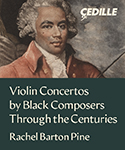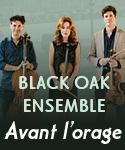The bassoon’s wide range of notes and inherently flexible nature have inspired some of Virko Baley’s most intimately wrought and inventive works to date. Memorable moments abound. During the last few minutes of Der Abschied, the fifth of the Songs Without Words (instrumental pieces based on Baley’s original vocal music), the bassoon reiterates a single B-flat note over a piano accompaniment that swings from soft, delicate high lying chords down to epic sonorities from the bottom of the keyboard. The overall effect is fragile and bold at the same time. Likewise, “…a trois” fuses starkness and rhapsodic lyricism in judicious proportion, and features subtle overlapping entrances between the piano, bassoon, and oboe.
Slow moving, easily unfolding melodic lines and quasi-flamenco decorative writing characterize the unaccompanied Treny-Laments II, which is remarkably well-sustained for a 15-minute solo bassoon composition. Baley’s ear for tone color and contrast come to the fore in the five-movement Partita No. 2. Following the first movement’s petulant solo bassoon dance, the first Scherzo brings in soft, rapid high-register piano figurations that play with and against the bassoonist’s inward utterances like a collage in motion. These ideas come back in fuller, more refined flower in the second Scherzo, which follows a slow-moving, dramatically desolate Aria. The latter’s mood continues to play out in the fifth movement, while the concluding Tango is a loose-knit, gently freewheeling tribute to this dance form.
The myriad challenges of Baley’s idiomatic yet demanding bassoon writing do not faze Kristin Wolfe Jensen for a second, as revealed by her impeccable intonation, prodigious breath control, and incisive approach to rhythm. Rebecca Henderson’s similarly accomplished oboe work in the aforementioned trio deserves the highest praise, along with the wide dynamic and color range of Michelle Schumann’s bedrock piano support. Baley himself proves an assertive yet sensitive keyboard presence in the trio.
Although the engineering does not have the close-up immediacy and detail one often hears in chamber recordings, it does convey very realistic and honestly balanced concert hall realism. Baley’s annotations are both descriptive and personal, adding further context and value to a most desirable release, and not just for adventurous bassoonists seeking out substantial new repertoire.
































